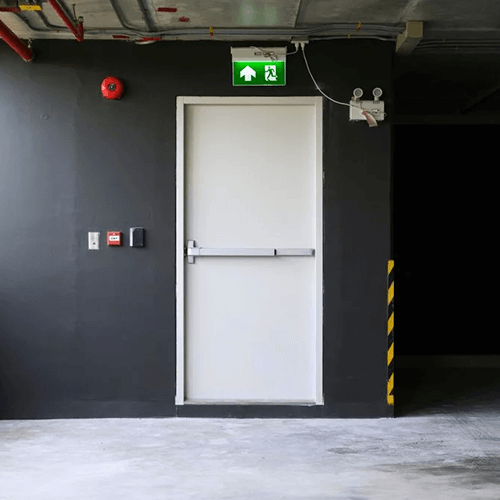
Fire safety is a critical consideration for any commercial building, and fire rated doors are an essential component of that safety plan. When selecting fire-rated doors for a building, you should understand the fire ratings for commercial doors, the level of protection they provide, and the factors to consider when choosing a door for a specific application.
Fire ratings for doors are based on their ability to resist fire and prevent the spread of flames and smoke. These ratings are determined by a series of tests that evaluate the door's performance in a fire. The most common rating systems for fire doors are the Underwriters Laboratories (UL) and the National Fire Protection Association (NFPA).
The UL rating system is the most widely recognized and accepted rating system in North America. UL fire ratings are based on four main criteria: fire resistance, smoke resistance, hose stream resistance, and impact resistance.
The fire resistance rating indicates how long the door can resist the passage of flames and heat. The rating specifies hours, and testers evaluate how long the door withstands heat and flames before failing.
The smoke resistance rating indicates how effectively the door can prevent the spread of smoke. During a fire, testers examine how much smoke can pass through the door.
The hose stream resistance rating indicates how well the door can withstand the force of water from a fire hose. They subject the door to a high-pressure stream of water to test its durability.
The impact resistance rating indicates how well the door can withstand impact from a heavy object or debris during a fire.
The NFPA rating system is used primarily in industrial and institutional settings. It is similar to the UL rating system, but it also includes a category for fire barrier doors, which are used to separate fire zones within a building.
The fire resistance rating in the NFPA system is also expressed in hours, and the other categories are similar to those in the UL system.
When selecting fire rated doors for a commercial building, consider several factors to ensure they are suitable and provide adequate protection.
The first factor to consider is the building codes and regulations that apply to the building. These codes specify the minimum fire rating requirements for doors in different areas of the building, based on factors such as occupancy type, building height, and egress requirements.
For example, in most jurisdictions, doors in stairwells, exit corridors, and other means of egress must have a minimum fire rating of one hour. Doors in fire-rated partitions and barriers may require higher ratings, depending on the type of occupancy and hazard level.
Another factor to consider is the application and use of the door. For example, doors in high-traffic areas, such as entrances and exits, may require a higher level of durability and impact resistance than doors in less-frequented areas.
Exterior doors need added weatherstripping and insulation to block smoke and heat.
The materials and construction of the door are also important factors to consider. Fire rated doors are typically made of steel, wood, or a combination of materials. The choice of material depends on factors such as the required fire rating, aesthetics, and cost.
Consider the door's construction, as it directly impacts its fire performance. For example, doors with solid cores may provide better fire resistance than doors with hollow cores.
Choosing the right fire-rated doors ensures occupant safety during fires. Consult trusted suppliers for proper selection and installation. Contact CDF Distributors today for more information and to find the right doors for your business.